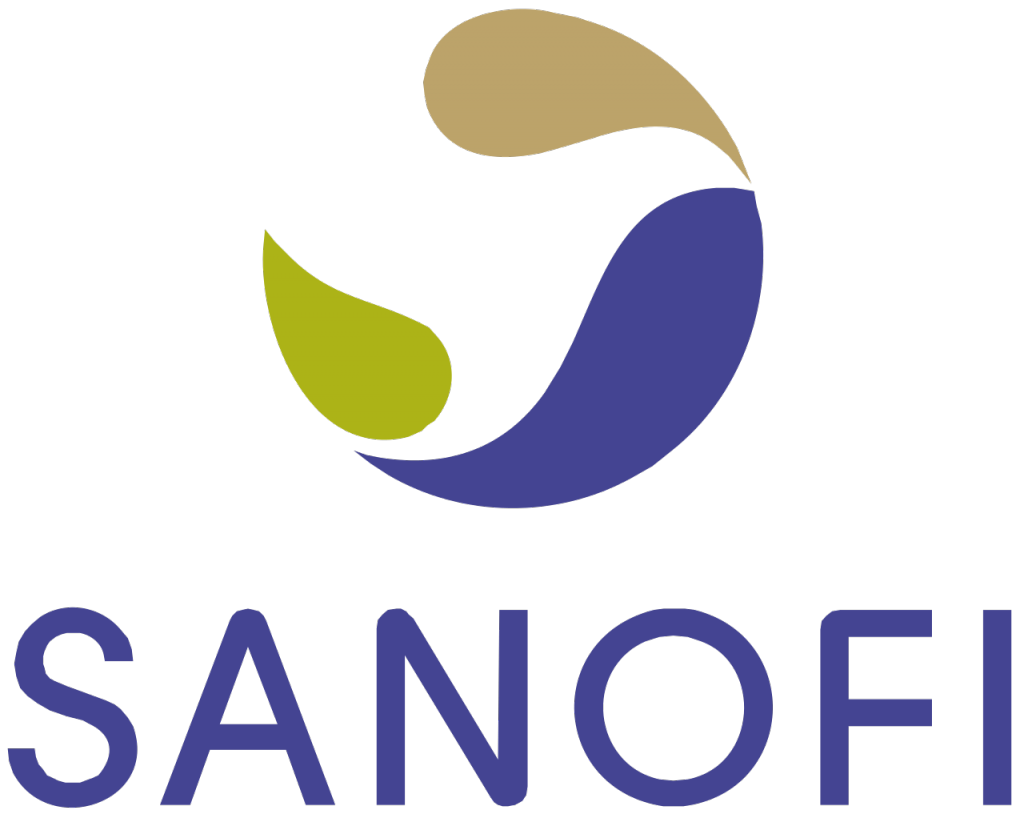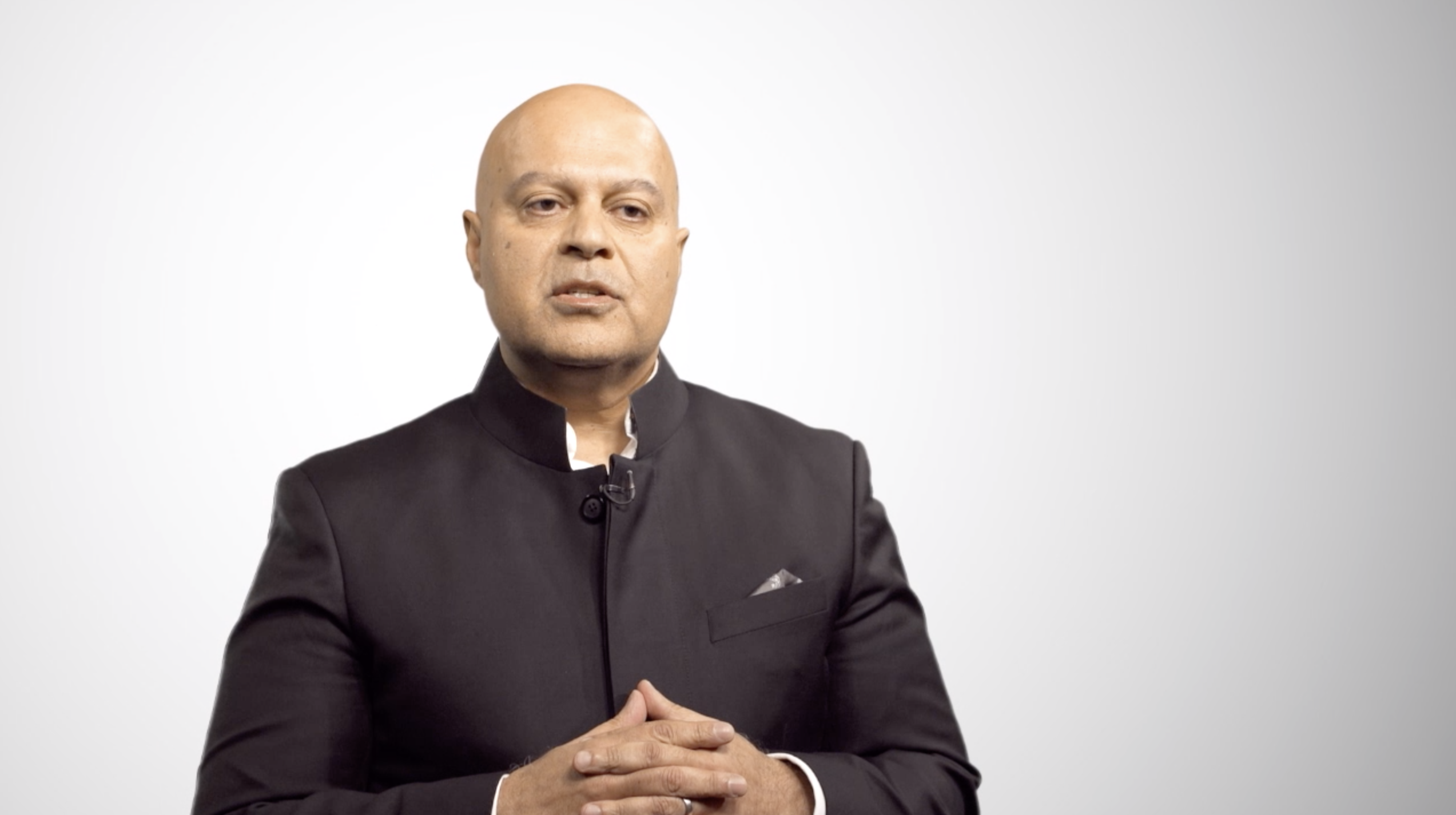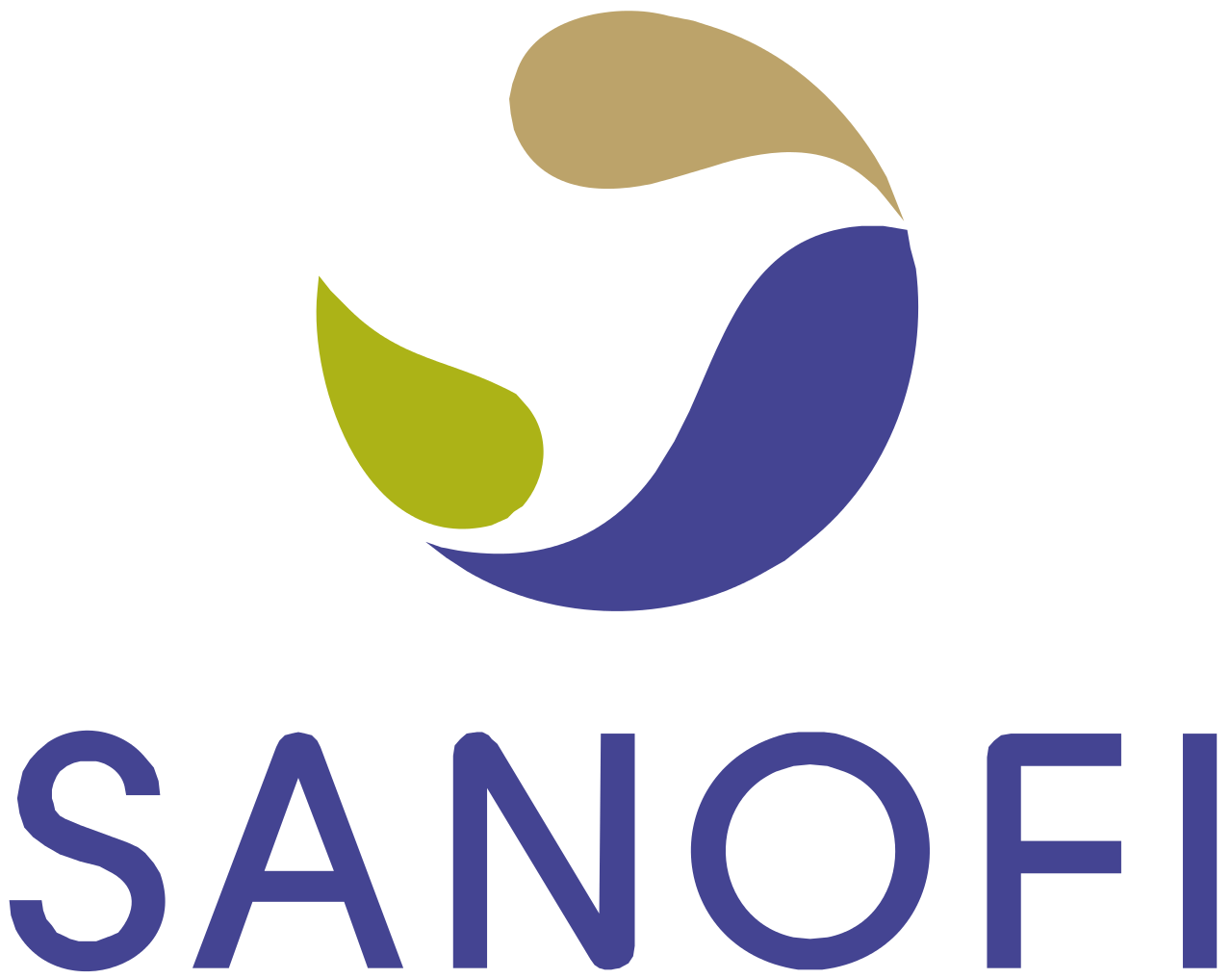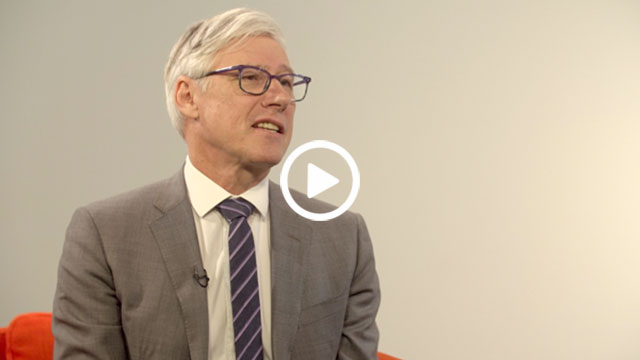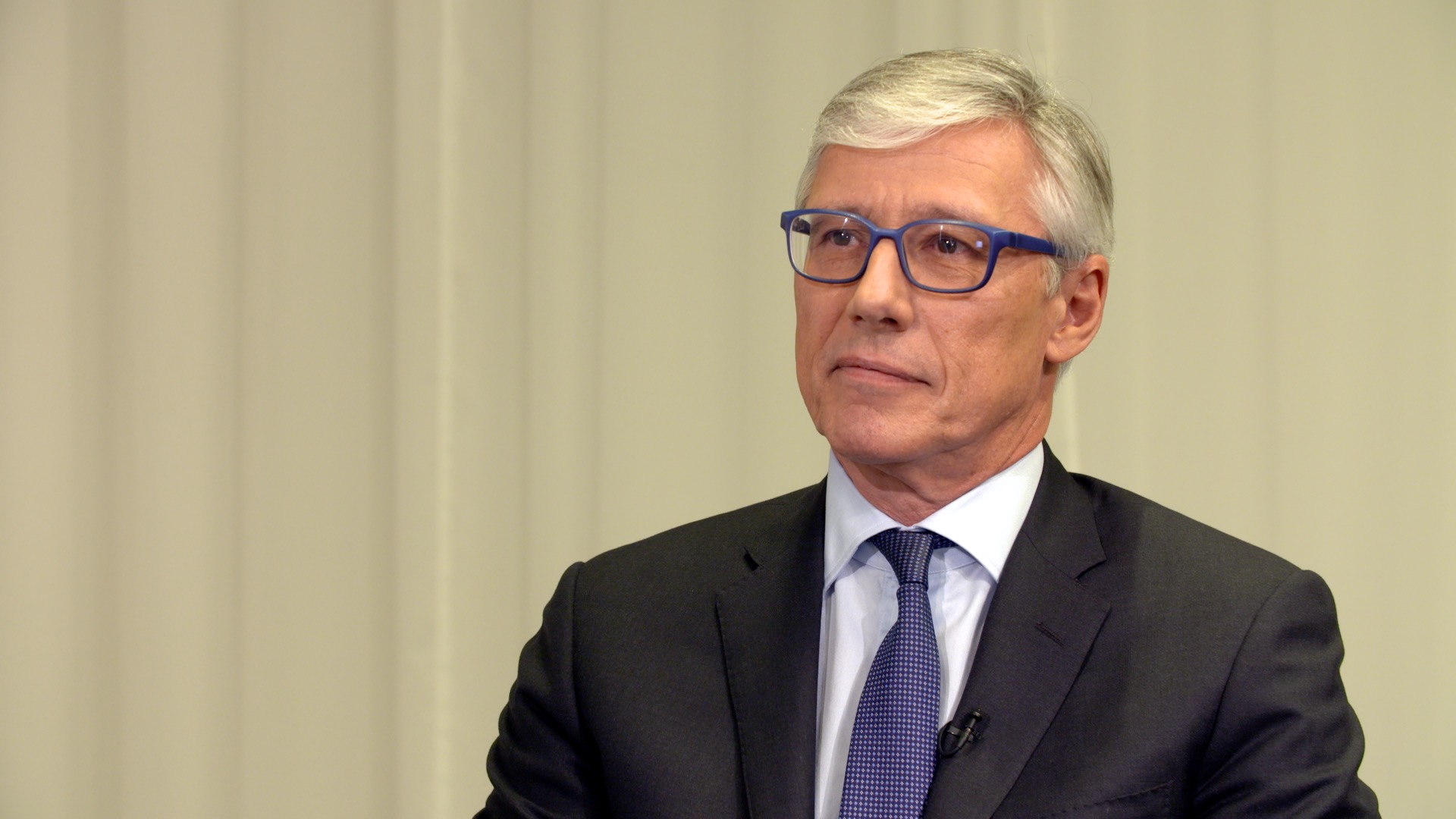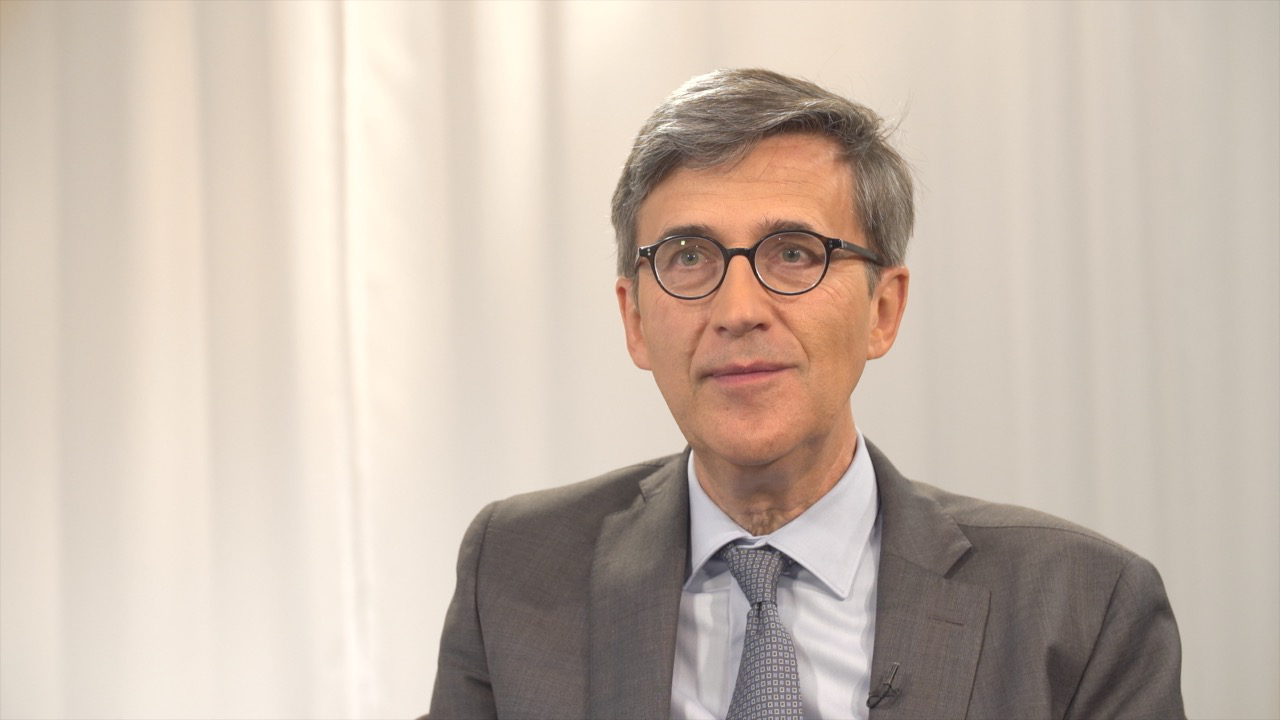EuroBusiness Media (EBM): Sanofi, a global and diversified healthcare leader, is hosting today its Investor Relations Thematic Seminar, with a special focus this year on Strategy & Outlook. Chris Viehbacher, welcome. You are the CEO of Sanofi, but you’ve also been recently appointed head of PhRMA, the body which represents the entire pharmaceutical industry in the US. So, before we talk about Sanofi’s outlook in just one moment, could you first please tell us, as head of PhRMA, what you see as the main challenges facing your industry as a whole today?
Chris Viehbacher: Well, you know, a lot of the challenges facing us are exactly the same ones that have been facing us for over ten years. There are clearly a number of big products that are coming to the end of their life, at the end of the patent. There aren’t enough new products coming along. We are against a difficult economic backdrop. So, as governments seek to reduce deficits, that has an impact on our business, either in direct price cuts or higher rebates, as we saw with healthcare reform in the United States. So, those are things that we have been dealing with for quite some time. What’s less well known is that this industry has really shown a lot of resilience. If you look at the cash flows and the dividend yields actually, I think this industry has actually shown its ability to cope with an awful lot of challenge. Now, in PhRMA, our main challenge is to really remind people of the strategic nature of our industry. When you look at the economic outlook that’s not looking particularly brilliant these days, you have to ask yourself, “What’s going to get us out of this?” And if you look historically, innovation has played a critical role – not just in the healthcare sector, but across the board, whether it’s in I.T., whether it’s in consumer goods, such as microwave ovens and the like. So it’s extremely important for governments to still continue to have an innovative agenda. That implies support for education, but also support for those industries that are really investing in innovation. So we’re trying to put the pharmaceutical industry right there at the heart of strategy. So, that yes, there are an awful lot of problems to solve, but this is one industry that can contribute significantly not only to better healthcare, but to creation of jobs as well.
EBM: Now, coming back to Sanofi more specifically, you were appointed CEO exactly three years ago. Since then, how have you transformed the company to prepare it for the challenges and opportunities that you just described?
Chris Viehbacher: If you thought about Sanofi three years ago, most of what you thought was one of the biggest and most concentrated patent cliffs in the industry. The loss of Plavix® and Taxotere®, we’ve had a Research and Development failure with Acomplia®. What we’ve really being doing over the last two years is completely transforming the business along three strategic pillars. The first one really was to completely transform Research & Development. We had spent an awful lot of money on Research & Development without any new products to launch. The second one was really to use the significant cash flow of the business to invest in external sources of growth. And the third was really to transform the business to what had become six new pillars of growth, or platforms of growth, as we’re calling them. And looking at these platforms of growth, it wasn’t just to try to replace the sales that we were going to lose as a result of generics, but to restructure the business in areas where there were significant growth possibilities around the world, when you looked at mega trends and the like, that you had some barrier to entry that wasn’t dependant upon a patent. And the third, obviously, an area where the company had some specific competence or expertise. So when you look at those businesses, we are talking about Emerging Markets where really our company is without parallel. We have Consumer Health and we have Animal Health, we’ve got Vaccines and Diabetes. But of course, Research & Development is still going to be an important part of our business. Innovation is at the core of our DNA, if you like. And so Innovative Products makes up the sixth area. We’ve spent about €23 billion on acquisitions. When we look out towards 2015, those acquisitions will represent roughly a third of the company. Those growth platforms are today two thirds of the business. They’ll represent 80% of our business in 2015. If I look at Emerging Markets, we’re projecting 38-40% of our business in emerging markets. And all the while we’ve been adjusting the cost base of the company, because all of these businesses have different areas of investment, so we have found a program to generate €2 billion of cost savings. And, we’ve also been able to significantly invest particularly in those growth platforms and emerging markets. So, all in all, when I look at it, this gives me a lot of confidence that we’re not only getting successfully through the patent cliff, but we’re putting the company into a position of continuous and sustainable growth going forward.
EBM: You mentioned the growth platforms. What should investors take away today from this Investor Relations Seminar regarding Sanofi’s growth platforms?
Chris Viehbacher: I’d like to say – and even some of my people are getting tired of hearing it – but in my career this is my fourth patent cliff and everything I’ve been trying to do is to avoid a fifth. The question is, how do you avoid that fifth one? Well, you avoid the fifth one by reducing the company’s dependence on small molecules which have limited patent lives and with which you lose almost all of your business in a short period of time. Look for businesses that have some natural barrier to entry: that might be some significant level of capital investment. That might be a brand, for example, as in Consumer Health. That might be in the fact that we have been 50 years or more in many emerging markets and have a depth of talent and manufacturing capacity. But these businesses really show resilience and can grow over time. So that’s why we designed these growth platforms. Now, we haven’t abandoned R&D by any means, it’s still extremely important. But even there, we can invest more in vaccines, more in biologicals that have longer lives, equally, have better probabilities of success in that. So, you know, when we look at the business, our objective, as I’ve always said, wasn’t just to replace what we were going to lose from generic competition to big blockbusters like Plavix®, etc. But it was really to put our company on a path to growth that didn’t completely depend on R&D, that didn’t completely depend on patents. So when we look out, those growth platforms have now critical mass – they are two thirds of our business to-date, 80% by the time we get to 2015. And all of those are growing. We have two very fast growing growth platforms. Emerging Markets – imagine a market of 6 billion people where you really haven’t penetrated at all. The fact that we have acquired Genzyme creates two new sources of growth, both in rare diseases, but also in multiple sclerosis where we are about to launch two important new medicines. Then, we’ve got businesses that are growing at high single digits: our Diabetes business, our Consumer business. Those are our businesses that can clearly grow. Vaccines falls into that category. Merial will grow at mid single digits, but it’s a nice growth. It’s shown also to be very resilient growth, even in a backdrop of economic difficulty. So, overall, the business we believe has a capability of growing at least 5% per year on a compound annual basis between now and 2015.
EBM: You’ve recently acquired Genzyme, a leader in rare diseases. What should investors bear in mind regarding the prospects of this significant acquisition?
Chris Viehbacher: This acquisition can be seen as beneficial in two ways: financially and strategically. Financially, this is a transaction that’s accretive in its first year. It’s significantly accretive to us over time; we have outlined accretion of 75 euro cents to a euro by 2013. We believe there are synergies of $700 million to be achieved. And all of this of course then generates significant return on capital. Strategically, this is a very important transaction for us. It gives us a leading position in one of the most significant areas of Research & Development in the world and in Cambridge, Massachusetts, where we have now become the leading Life Sciences employer. I’ve personally spent a lot of time with MIT and Harvard. There’s just a wealth of activity going on there with venture capital and biotechs. It also puts this company really at the forefront of biotechnology. This is an area where the company had been less present, despite our presence in vaccines and in products like insulin. We were not very strong in monoclonal antibodies or in biology in general. So this really closes that gap for us. It also really introduces the notion of rare diseases for us - a huge unmet medical need in rare diseases. And when you think about personalised medicine, if you follow that really to the extreme, pretty much most diseases are going to become really rare diseases in some ways, because you are going to have biomarker, you’re going to have a limited population. And, I guess, the final element is that this is a company that was much further ahead in translational research, really identifying what research can do, to benefit a patient. We’re looking at really utilising that translational research all the way through the Sanofi Group. So if you like, it’s a way of really jump starting some of what we are trying to do in Research & Development and providing us with some new products, such as Lemtrada™ in multiple sclerosis, and positioning us well in one of the key areas. And since you get all that with a financially attractive package, that’s why we are so excited about this transaction.
EBM: Concerning R&D and innovative products, what should investors be focusing on today regarding the prospects for your pipeline?
Chris Viehbacher: If you look at what we have been doing for the last two years, there was an awful lot of cleanup that we needed to do. We really evaluated the entire pipeline. We eliminated a number of projects that we didn’t think had value. We really, what we call, “stress tested” the pipeline. It wasn’t enough to be safe and efficacious; they had to be projects that were really going to add something that is not present today. We had to really improve governance to make sure that, as every project passed through the next gate of decision making, that this was robust. We had to simplify our organization. To give some figures to this, we used to have 11 organizational levels in the organization; now we have gone to six. We used to have 18 decision making committees; now we have gone to essentially 3. So all of this has sped up the organization, really put all of our senior people back on a hands-on basis in the science. We have done 61 business development agreements, so we are really demonstrating an open innovation. We have established relationships with some of the key academic institutions in Europe, US and Asia. So actually, I think we are in an extremely good shape. If I look at our pipeline, I think we are also in a very interesting position. Because we haven’t necessarily talked about it so much before, I think we are able to surprise on the upside. We have 6 new products to file within a 9-month period. In fact, we have already filed two of those. 6 products! Not life cycle management projects, but new molecular, chemical or biological entities - is a fantastic performance by anybody’s books. And as I look at the period between now and 2015, we have 19 projects that we can potentially launch by the end of 2015. So I think, actually, even though we have been focusing on our growth platforms and making sure we were diversified, the investment we are making in R&D is putting us in a position where we can have nice accretion to an already growing company through the success of our pipeline.
EBM: Ahead of this Investor Relations Seminar that you are hosting, investors have, of course, been eagerly waiting for you to reveal today to the market your guidance for the post patent-cliff period, taking into account the Genzyme acquisition. Is Sanofi set to become a growth story again?
Chris Viehbacher: Absolutely! Before we look at the longer term, I think we should remind people that in July of 2009 we gave midterm guidance to 2013. That was to achieve the same level of sales and profit coming out of the cliff as we had going into the cliff. We can absolutely confirm that, and confirm also that the accretion created by Genzyme is accretive to that guidance. But most investors look at that as being obsolete. They are really looking at, “Where does the company go post the cliff?”, and that is really the objective of our seminar. So if I take sales, we’ve already discussed that our growth platforms are performing well and that they will represent roughly 80% of our business by 2015. So as I look at that period from 2012 to 2015, we believe that the performance of those growth platforms will allow us to achieve sales growth of at least 5% compound annual growth. Now, any well run business should have a leveraged P&L. So we would also say that if we can achieve at least 5% sales growth, we should be able to do better than that in terms of EPS growth. In order for us to be able to achieve that, of course, and given that the businesses we’re in require investments here and disinvestments there, we have also committed to a further cost saving target of further €2 billion between now and 2015.
EBM: Lastly, regarding shareholder returns, in the current jittery stock market environment, what is your message to investors today about Sanofi's dividend and share buyback policy going forward?
Chris Viehbacher: As we look at the new Sanofi I think we can see that we have got a sustainable and consistent sales growth picture evolving. I think we’ve got a management that has demonstrated a successful track record of execution. We will continue to have very strong cash flow generation and discipline over costs. So that allows us then to also think about shareholder returns. I believe that dividends are the best way to really generate solid return to shareholders. We will use buybacks on an opportunistic basis, but buybacks are really one-off transactions. To really commit to a dividend policy, really requires you to commit to the future of the company, and it’s a way of providing returns on a longer term basis to your shareholders. So where do we start? Well, if I look at the 2010 dividend that was paid in 2011 recently - that represented a payout ratio of about 35%. Now, if we kept that payout ratio constant, we would still expect, over time, an increasing dividend in line with what we expect to see in terms of Earnings Per Share growth between now and 2015. But we actually believe we can do better than that. We believe that we can progressively increase our dividend payout ratio to 50%. And we would expect to achieve that with the payment of the 2013 dividend, which will be paid out in 2014. So again, I think, if you look at the combination of a growing sales picture, a lower risk profile with one of the lowest risks of patent expiry in generic activity in the industry, a solid track record of execution, and I think a dividend policy that really wants to create shareholder value, I think that this is something that is going to be attractive to our investor base.
EBM: Chris Viehbacher, CEO of Sanofi, thank you.
Chris Viehbacher: Thank you Adrian.

